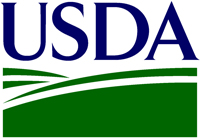 Allergen-free peanuts is just one of the many innovations in ag during fiscal year 2014 for the U.S. Department of Agriculture. The agency’s Agricultural Research Service (ARS) says USDA received 83 patents in FY2014, up from 51 patents in 2013, leading to new patents and inventions with the potential for commercial application and potential economic growth.
Allergen-free peanuts is just one of the many innovations in ag during fiscal year 2014 for the U.S. Department of Agriculture. The agency’s Agricultural Research Service (ARS) says USDA received 83 patents in FY2014, up from 51 patents in 2013, leading to new patents and inventions with the potential for commercial application and potential economic growth.
“USDA has a proven track record of performing research that has tangible benefits for the American public, and studies have found every dollar invested in agricultural research returns $20 to our economy,” said [Ag Secretary Tom] Vilsack. “USDA is now accelerating the commercialization of federal research, and government researchers are working closely with the private sector to develop new technology and transfer it to the marketplace.”
Highlighted discoveries from USDA’s 2014 Technology Transfer Report include:
Procedures to remove up to 98-percent of the allergens from peanuts without affecting the flavor;
A new process for pasteurizing shelled eggs using radio frequency energy that is 1.5 times faster than the current pasteurization process;
A portable method for identifying harmful bacteria in food that could improve the response to foodborne illness outbreaks;
A new method for mosquito control that specifically silences genes in the mosquito so it does not pose a danger to other insects, including pollinators;
A new soil nitrogen test that rapidly and inexpensively determines the total amount of nitrogen in the soil that is available to a plant, reducing costs for farmers while benefiting the environment;
Improved information on non-honey bee pollinators and methods for trapping bees to assure quality apple production.
Besides the 83 patents received in the last fiscal year, there were 119 patent applications filed and disclosed another 117 new inventions, which may lead to future patents. The USDA has 267 active Cooperative Research and Development Agreements with outside partners, which includes Universities, and other organizations, and more than 100 small businesses.

